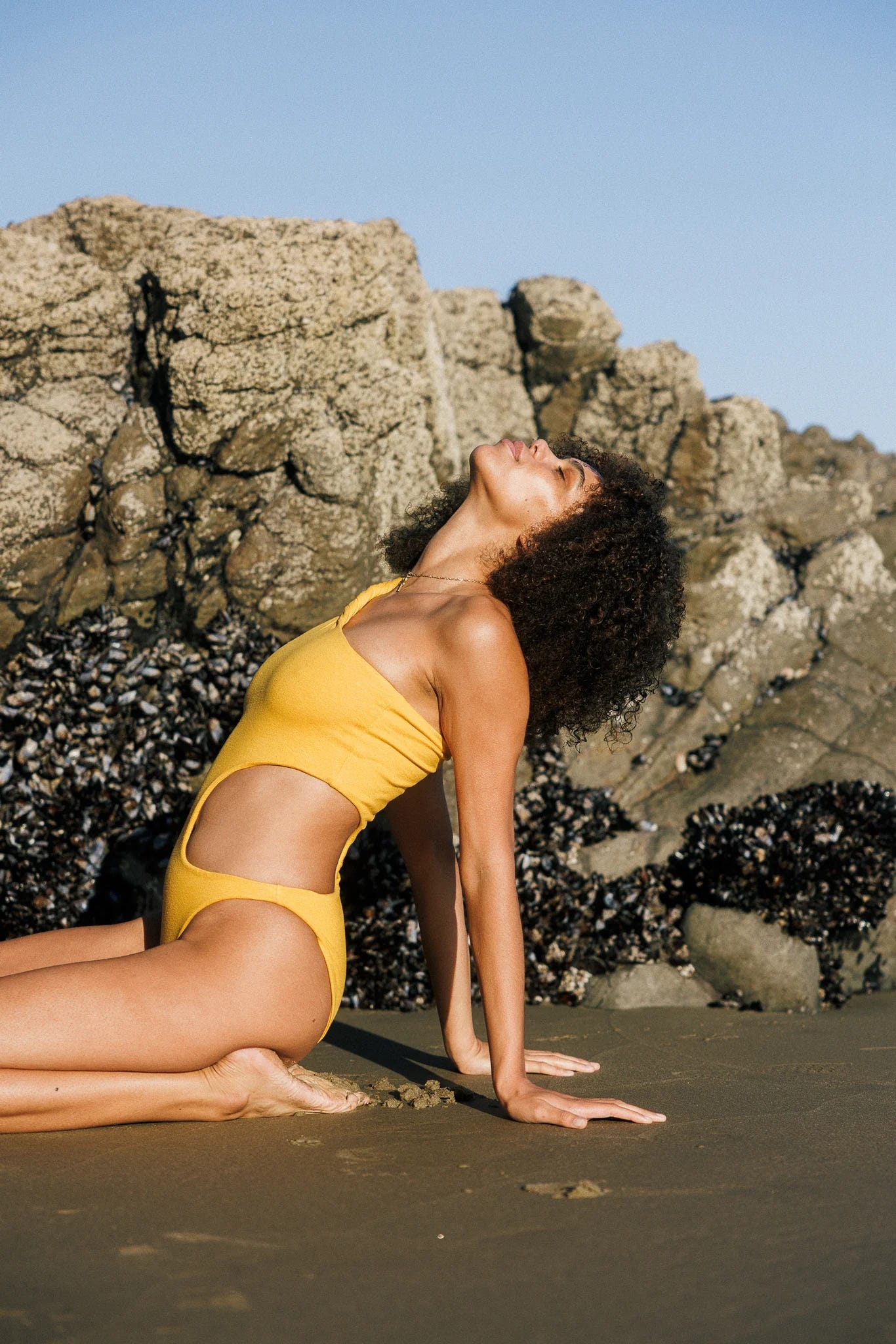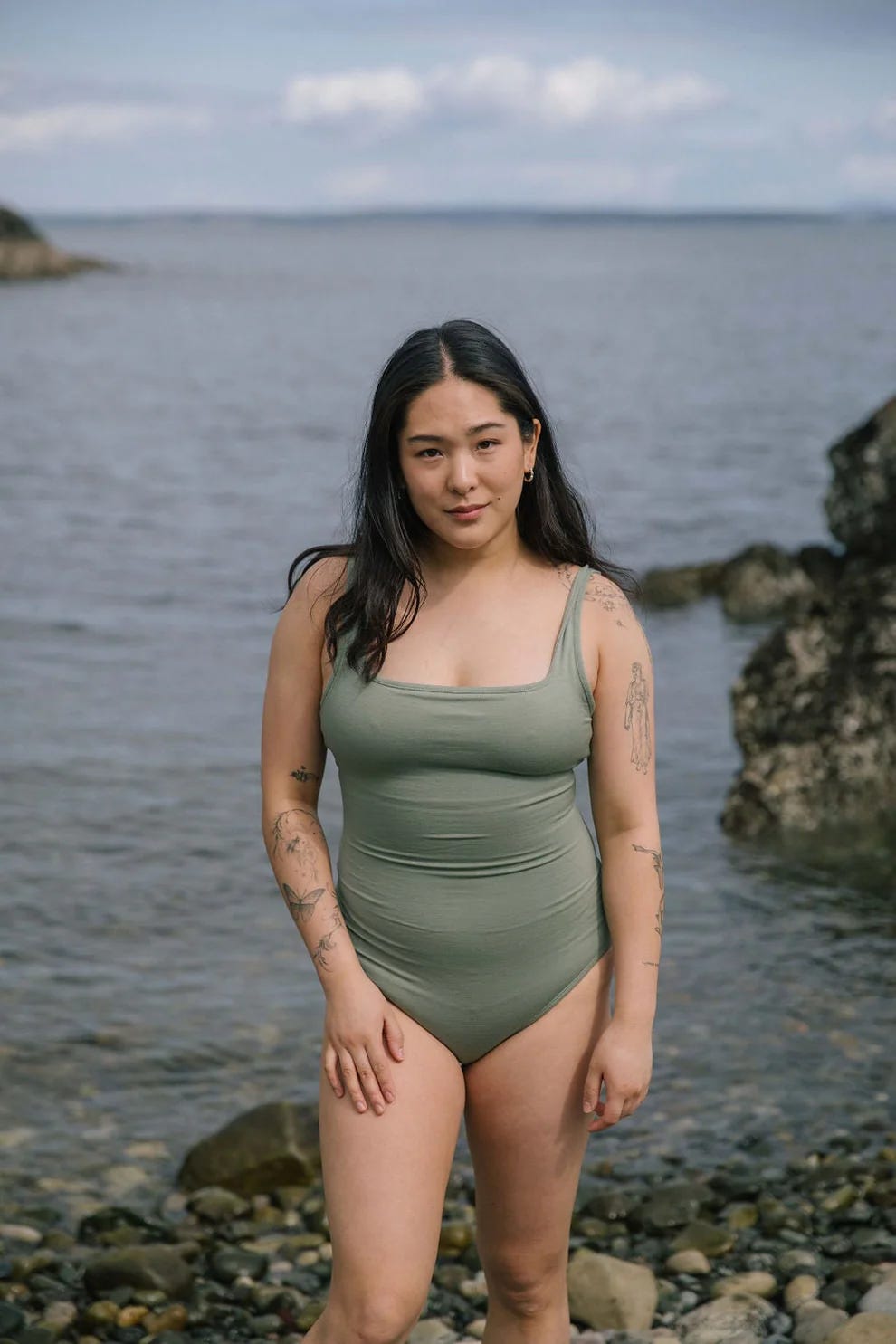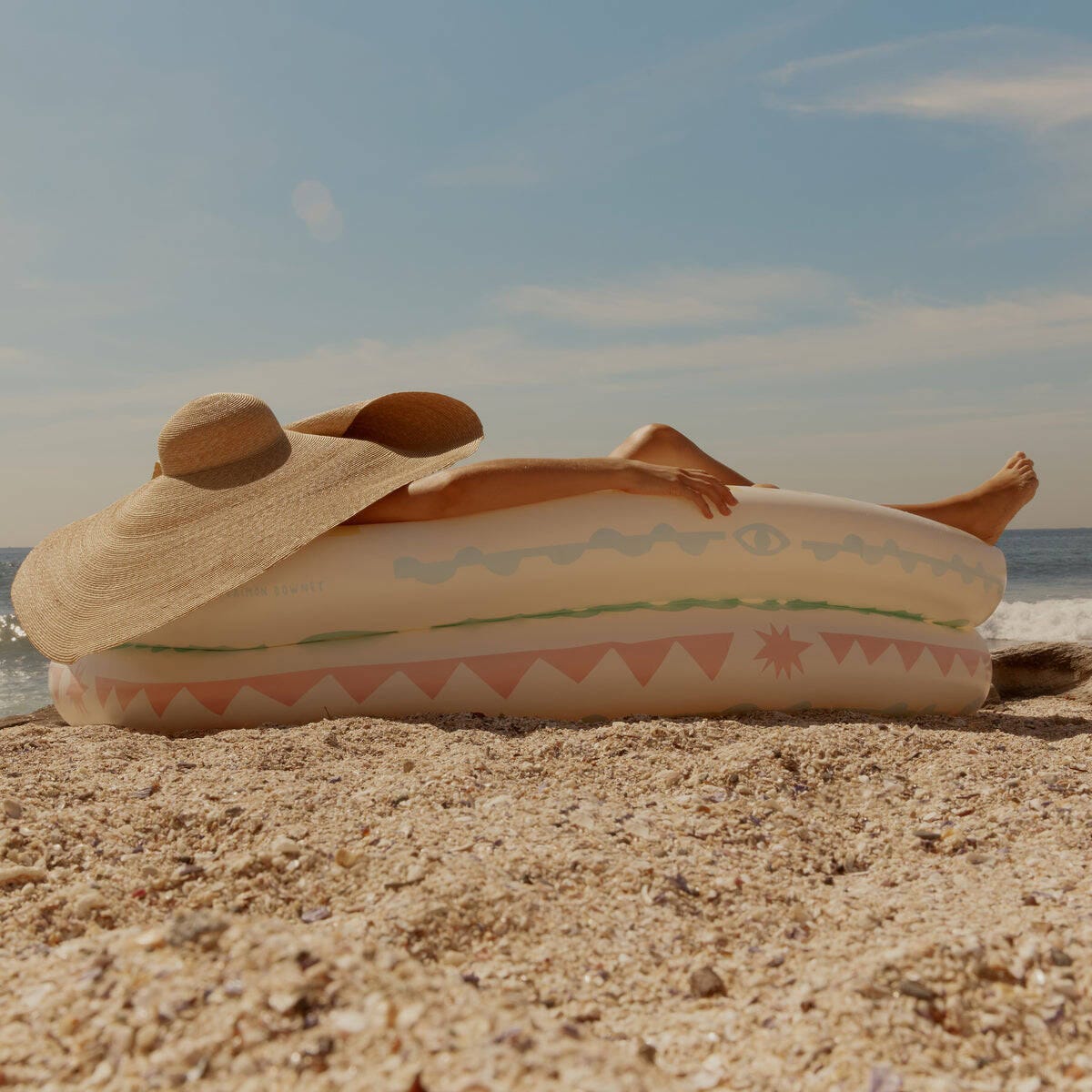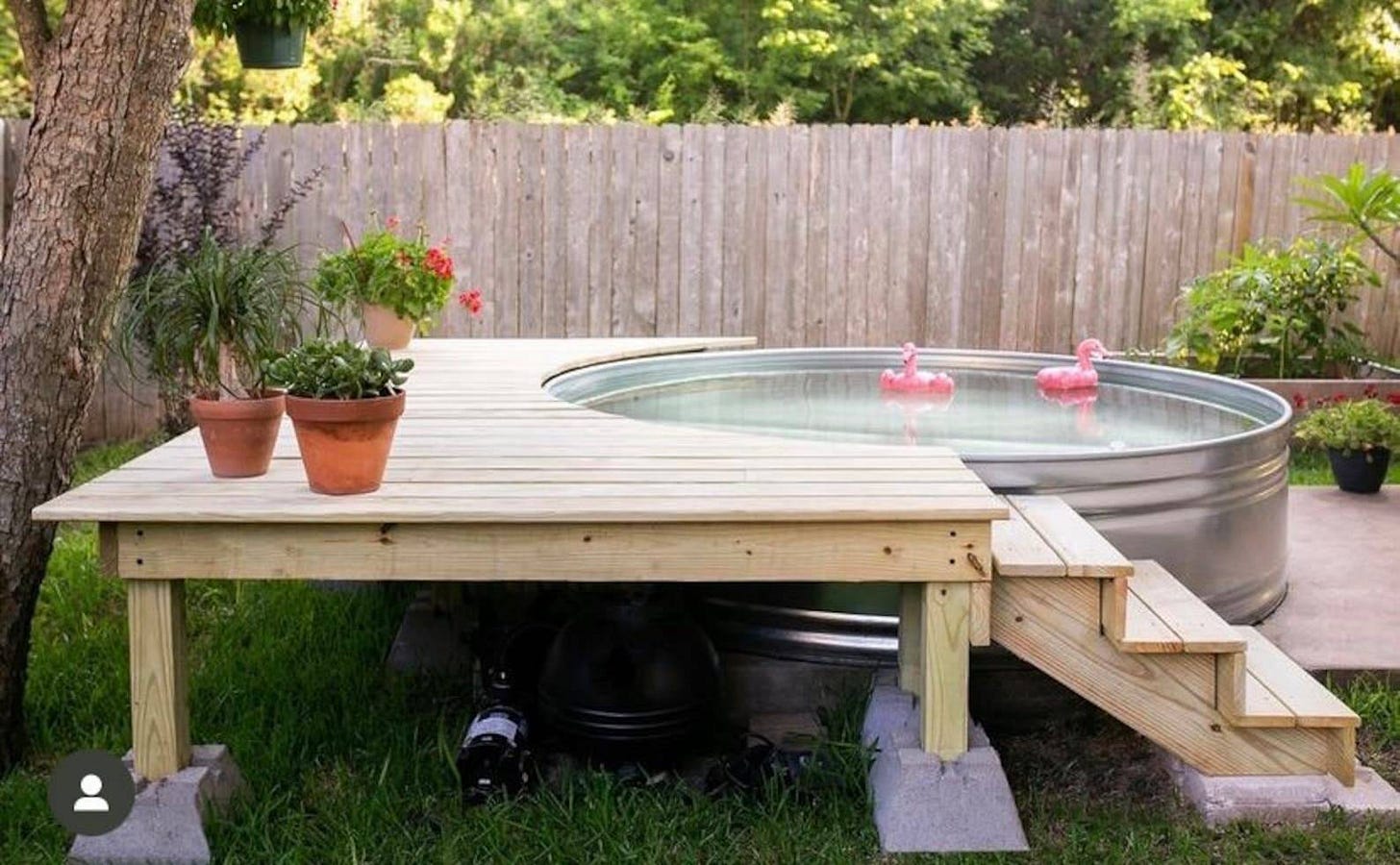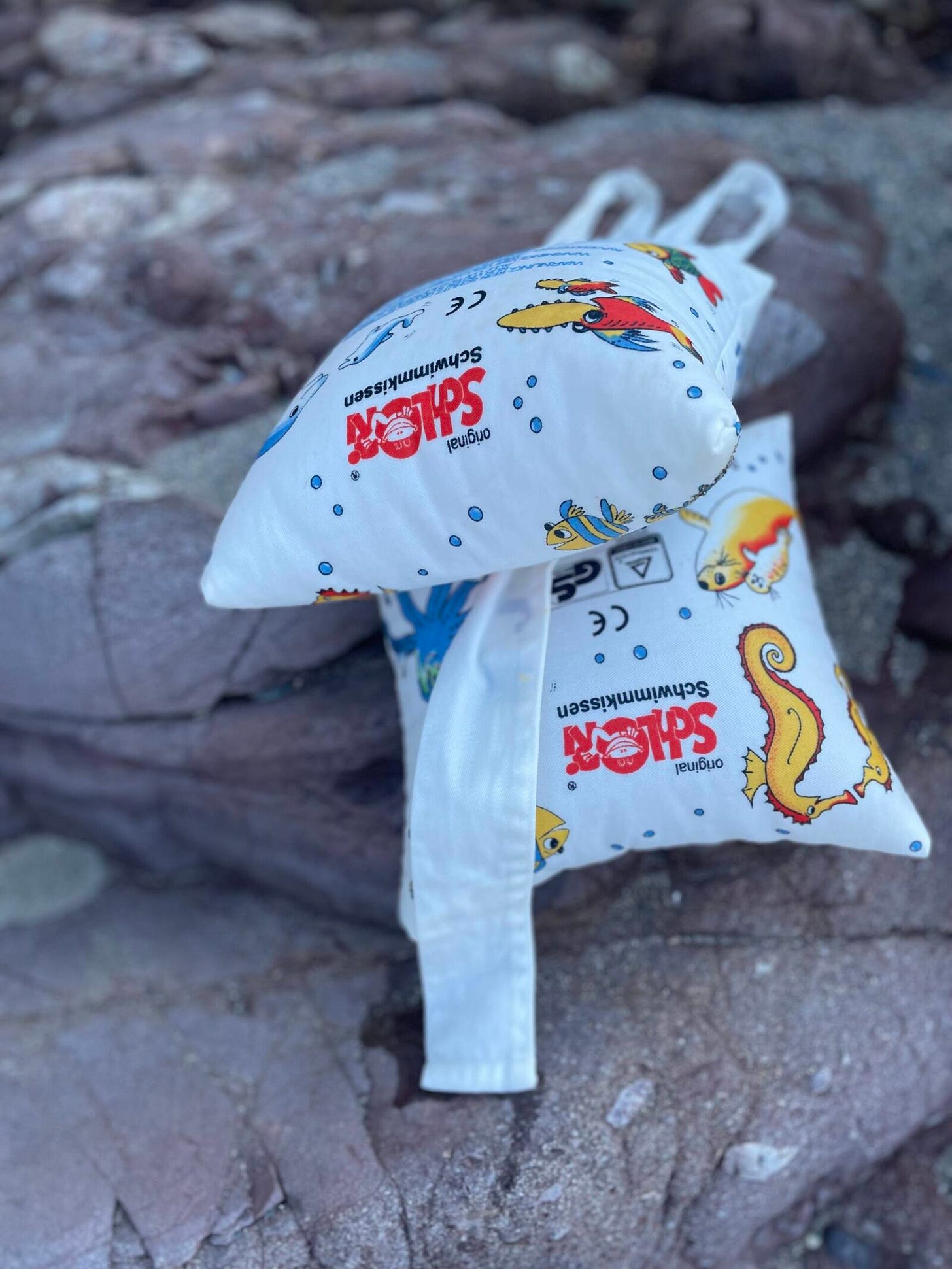Dive into Plastic-Free Swimwear: The Best Natural, Eco-Friendly Options
After our “birthday suits”, natural fibres are the next best thing to swim in!
(This post contains some affiliate links, which essentially means that at no cost to you, I may make a small commission on qualifying purchases - but I only ever recommend products and brands I love and think you will too).
First up…Does Plastic-Free Swimwear Even Exist?
Yes, it does! But finding it can be as tricky as finding your car keys in the sand. I remember searching high and low to find my keys an organic or natural bikini for myself and some plastic-free swim shorts for my husband and son.
As a result, I’ve done a deep dive (pun intended!) to discover the best plastic-free swimwear made from natural and organic materials just for you.
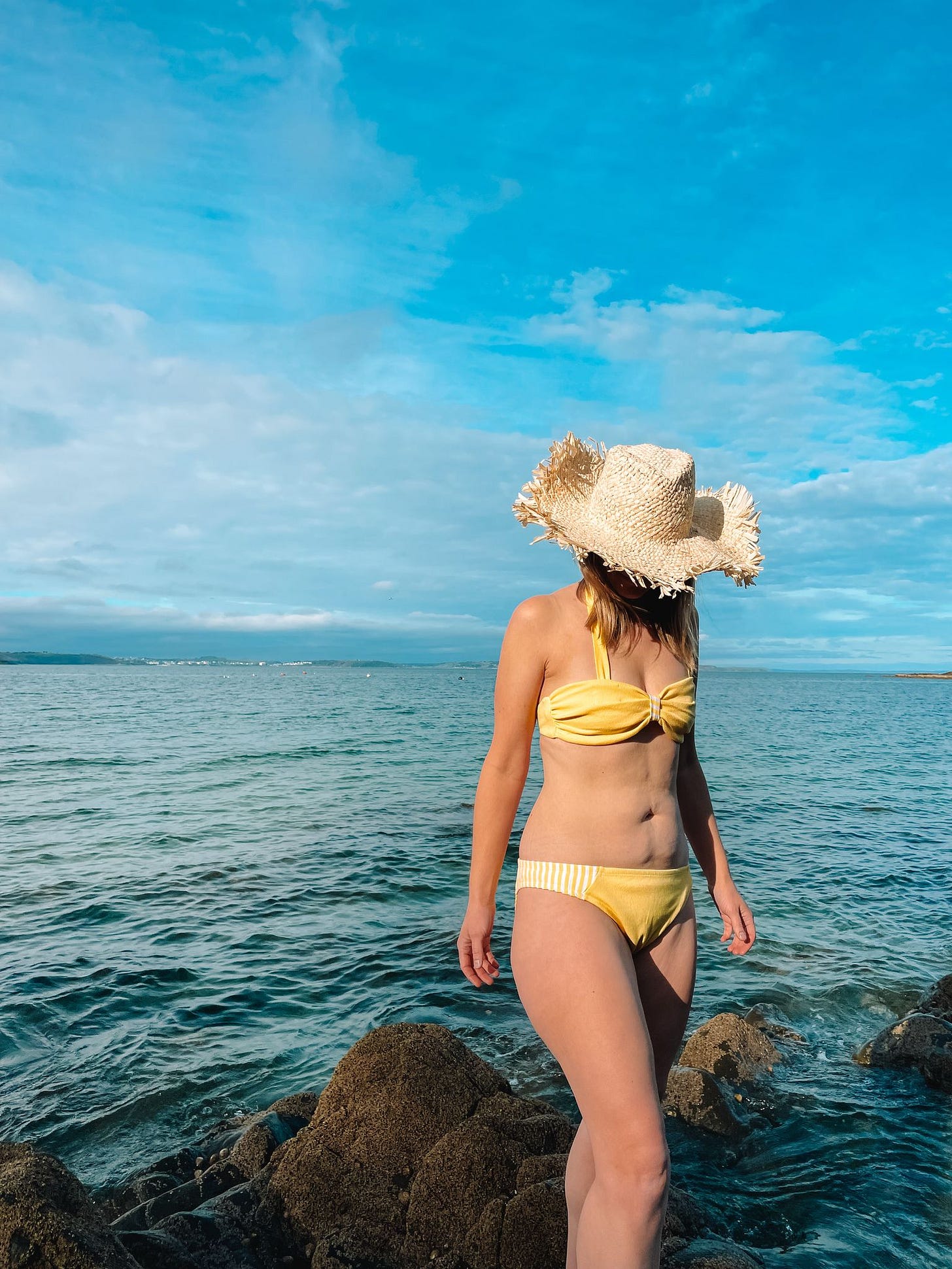
Why Choose Plastic-Free Swimwear?
Most modern swimwear is currently made from synthetic materials such as polyester and nylon which are derived from petrochemicals. In short, they’re plastic.
Even swimwear made from recycled plastic bottles, which is becoming increasingly popular and often marketed as “eco swimwear” is still technically plastic, meaning we’re potentially shedding a load of itsy bitsy, teeny weeny microplastic-fibres into the sea from our bikinis, bathing suits, board shorts and budgy smugglers.
But how does this happen? Well, it turns out that washing synthetic clothing at home is one of the main source of microplastics in our oceans, mainly caused by the agitation and chemical stresses the fabrics undergo during the laundry cycle, causing them to shed. And because they’re so small, they can pass through wastewater treatment plants and end up in the oceans. And simply wading into the sea and going for a swim in synthetic material will likely release microplastics too.
Once in the ocean, these plastic microfibres act like a sponge, soaking up environmental toxins, and once ingested by fish, these toxins can work their way up our food chain, and bio-accumulate and bio-magnify.
The single largest source of plastic ingestion globally is through water, both bottled and tap. Beer and salt were also found to contain high levels of plastic.
And scientists have discovered that ingesting microplastics have a harmful effect on human cells.
In short, microplastics are polluting our oceans and waterways, killing marine life and are harmful to human health when ingested or inhaled. Yikes!
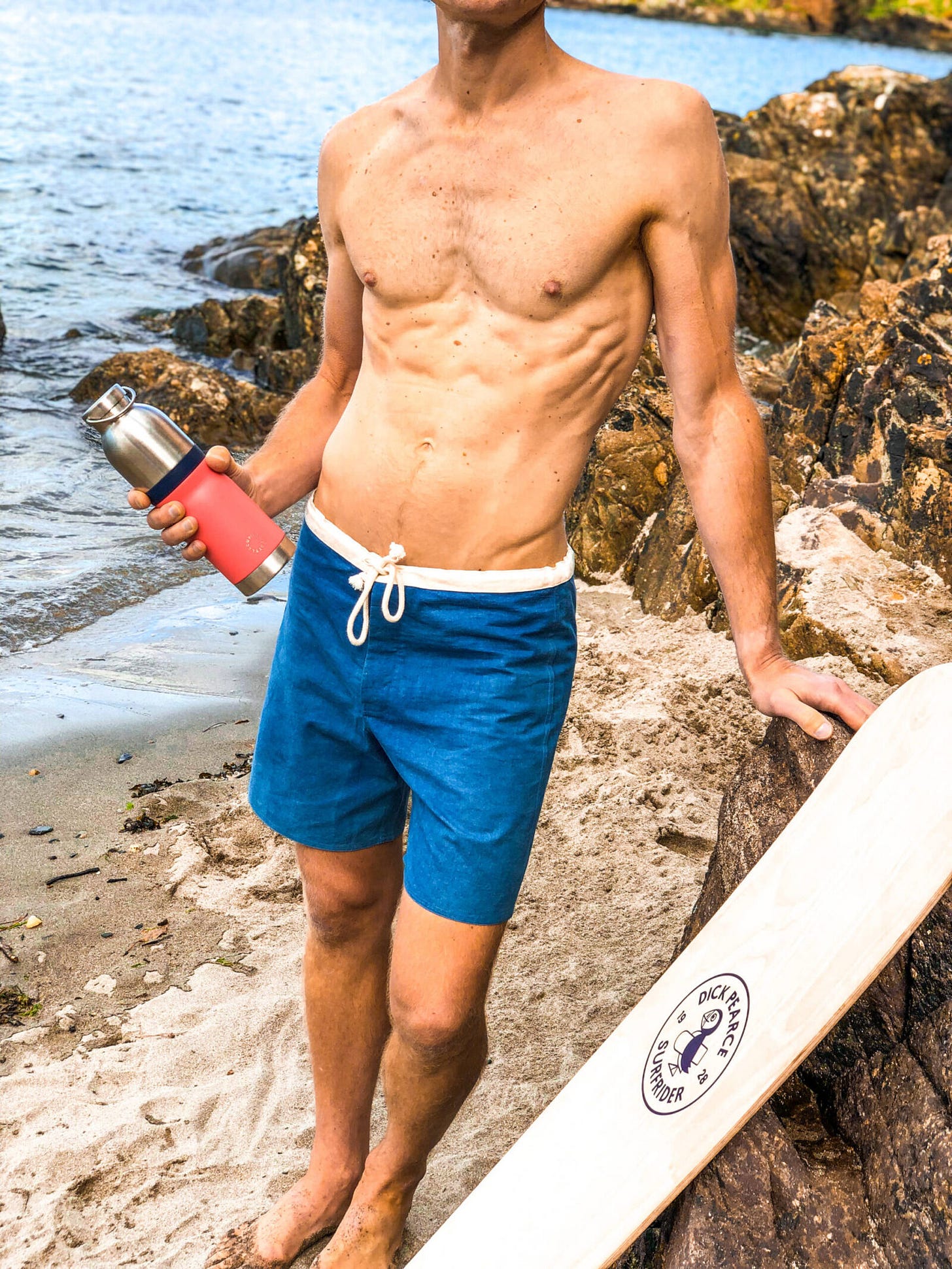
What About Swimwear Made From Recycled Plastics?
Microplastics are also a major issue when it comes to recycled fabrics, including those used in swimwear. One study suggests that recycled polyester sheds 2.3 times more plastic microfibres than conventional polyester.
A study of microplastic pollution around the North Pole found that more than 73% of microfibre pollution comes from polyester fibers that resembled PET (polyester) from textiles.
And sure, natural fibres can shed and end up in the ocean too, but the difference is that, unlike plastic fibres, they naturally biodegrade.
What About Elastane, Spandex or Lycra?
First up, what’s the difference between elastane, spandex and Lycra? Well they are all a type of synthetic elastic fibres, with spandex and elastane being used interchangeably depending on where you are in the world whereas LYCRA® brand spandex fibres are only produced by The LYCRA Company, .
Most natural fibre swimwear will still use a small percentage of elastane for a little stretch and performance. Interestingly elastane has been found to shed easily in the wash which means it can also contribute to microplastic pollution.
Personally, I’d choose a low percentage of elastane wherever possible. And I’ve even found a few 100% natural swimwear options listed below!
The Benefits of Swimming in Natural Fibres
Natural fibres, including merino wool, hemp, and organic cotton are not only biodegradable they’re also breathable, quick-drying and often naturally stretchy. Merino wool and hemp both have a naturally high UPF (ultraviolet protection factor) of around 50+ protecting your skin from the sun.
On a personal note, I love swimming in my natural swimwear. I own a merino wool swimsuit, a merino wool bikini, a cotton bikini and a bathing suit made from hemp and organic cotton. All have been an upgrade from synthetic swimwear!
Which Natural Materials Work Best For Swimwear?
Merino Wool – UPF 50+, breathable, and fast-drying. Historically used for swimwear, merino wool is making a comeback for its eco-friendly properties.
Hemp – UPF 50+, anti-microbial, and durable. Hemp produces more fibre than cotton and flax, and doesn’t need synthetic fertilisers or pesticides.
Organic Cotton – Soft, breathable, and naturally stretchy and uses fewer pesticides and less water compared to conventional cotton.
Ready to take the plunge and make a splash with natural fibre eco-friendly swimwear?
The Best Plastic-Free Swimwear Brands
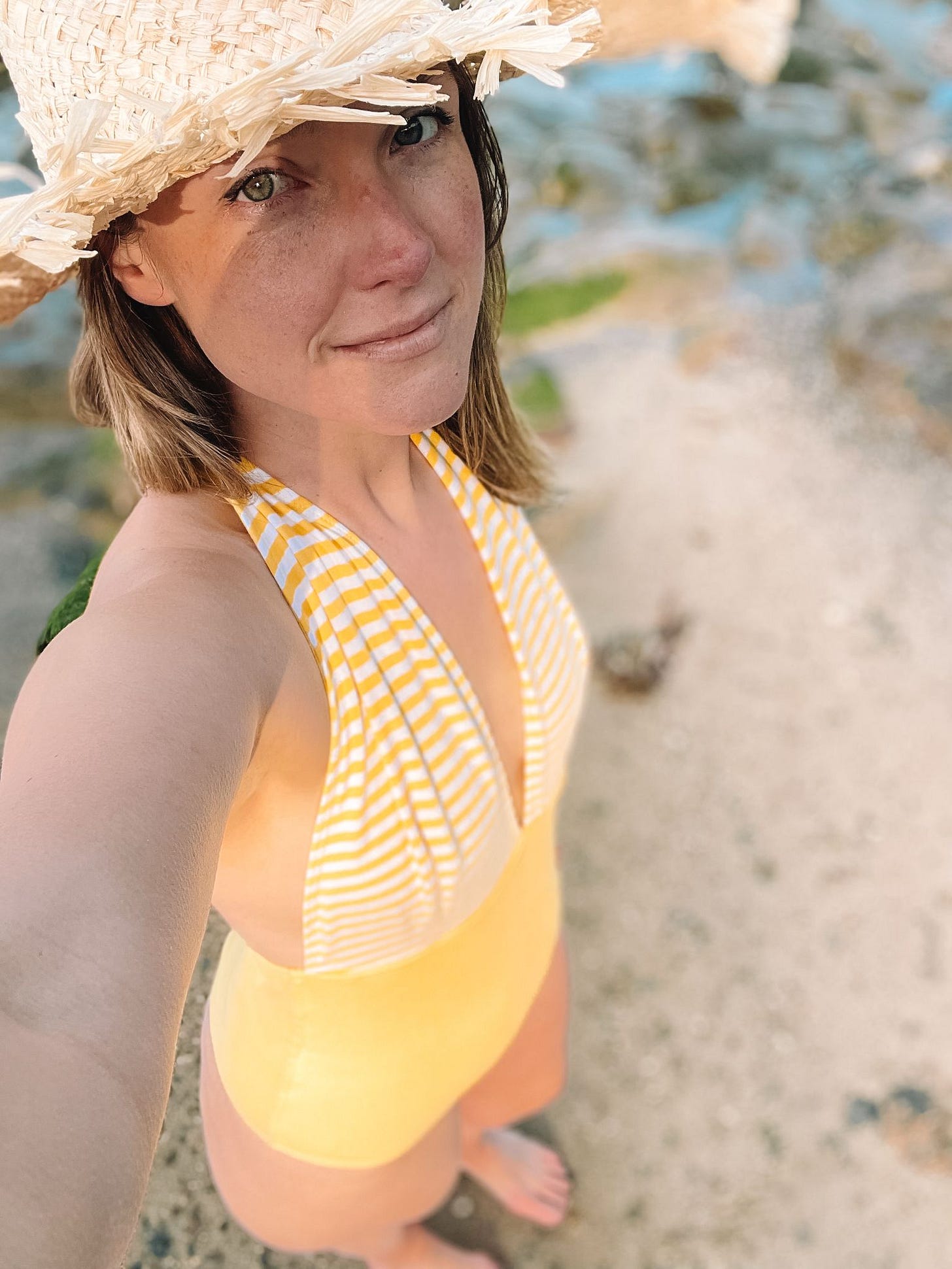
Pure Earth Collection have just launched their beautiful new collection of plastic-free swimwear for the whole family. Their collection features swimsuits, bikinis and board shorts for adults as well as bathing suits (including some with long sleeves,) swimming shorts and rash vests for babies and children aged 2 - 13 years, all in a variety of colours and with a high UPF 50+ to protect skin from the sun.

They even have a plastic-free organic swim nappy. And all of their swimwear is made from 98% organic cotton (2% lycra which is free from PFAS and BPA) with each piece made using safe, non-toxic dyes without any harmful chemicals.
Even the inner brief support inside their organic board shorts (which I’m reliably told is the *ahem* “banana hammock” according to Pure Earth Collection Founder, Emma) is made from organic cotton! No synthetic mesh in sight.
Pre-orders are launching today (April 1st 2025) with shipping later this week.
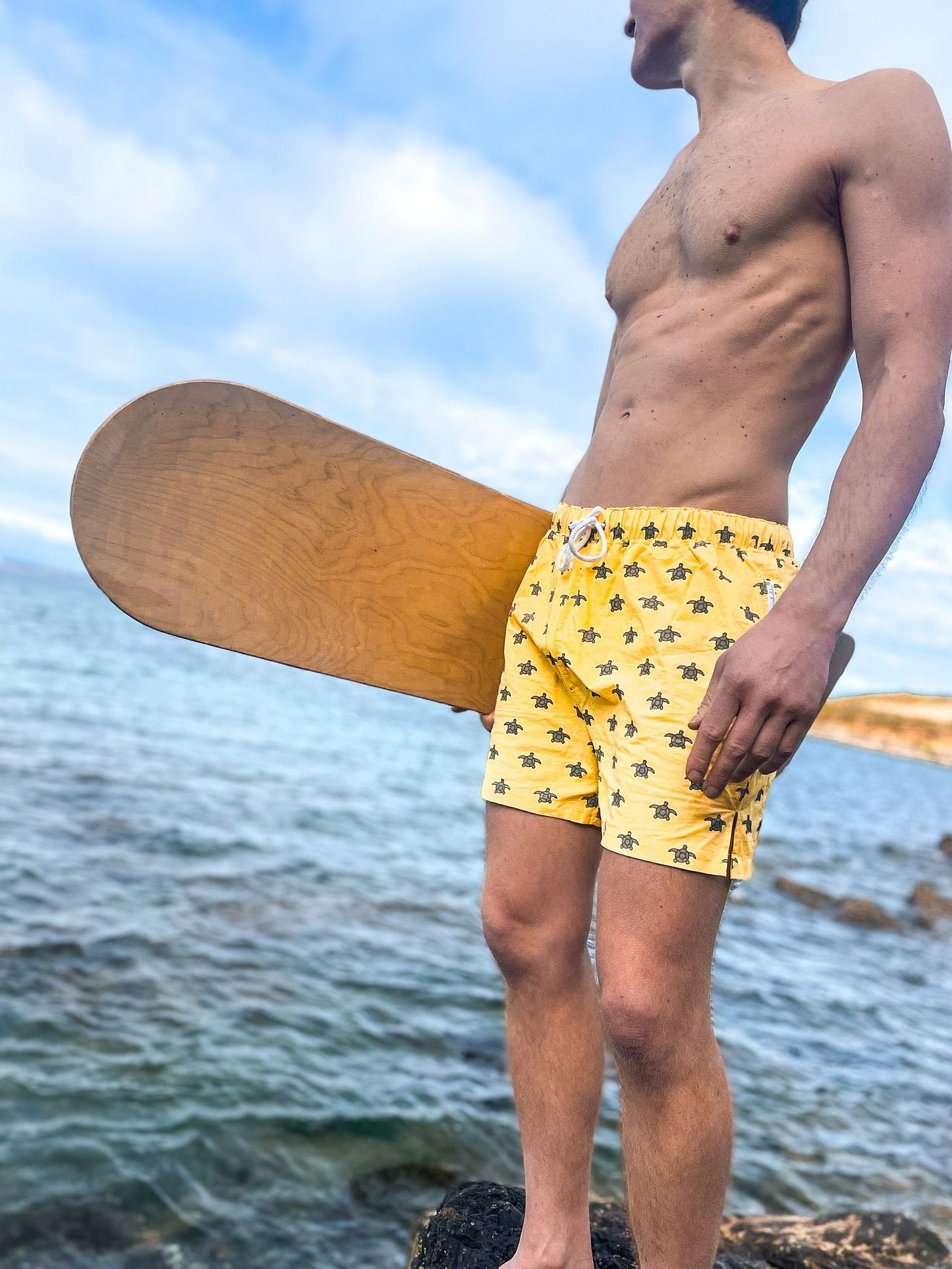
Industry Of All Nations is a unisex brand that goes above and beyond when it comes to natural fibres, natural dyes, sustainability and ethical production by working with local manufacturers at the source of each raw material. They are also proudly plastic-free.
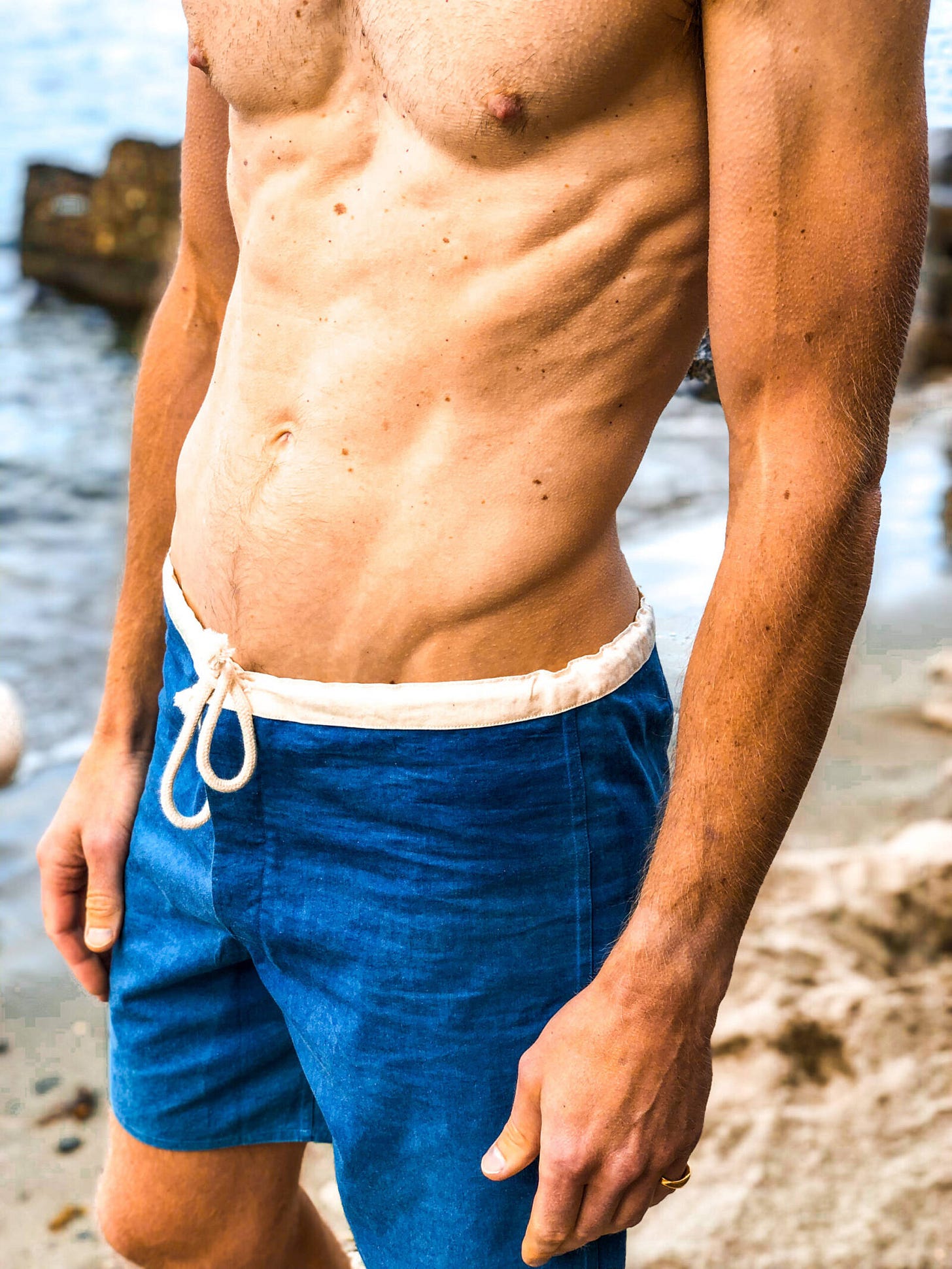
Their plastic-free boardshorts are made from 100% organic cotton (no elastane!) and have been dyed with naturally fermented indigo. My husband, Mark owns a pair and loves swimming his Industry of All Nations organic board shorts for his morning and afternoon swims everyday (we live close to a beach… and he loves a swim!)
Swimwear designer Natasha Tonic creates beautiful bikinis and swimsuits made from organic cotton and hemp, using non-toxic dyes, ethically crafted in Los Angeles.
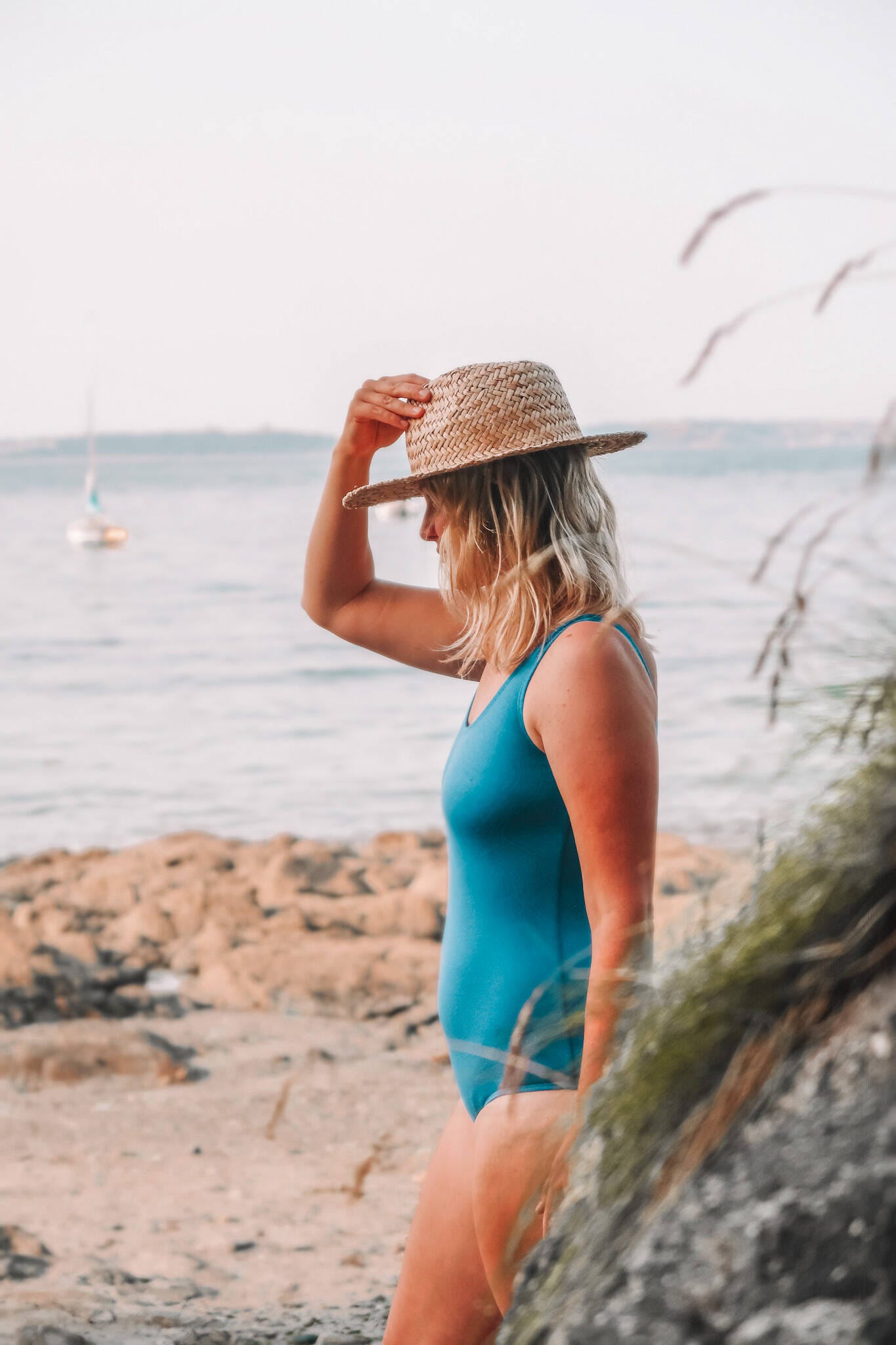
Australian brand Swimm makes bikinis and swimsuits made from superfine Responsible Wool Standards accredited Australian merino wool. I initially bought one of their bikinis and they kindly gifted me a merino wool swim suit to try - I love both! In my humble opinion, merino wool swimwear is comfortable, quick-drying and a joy to swim in!
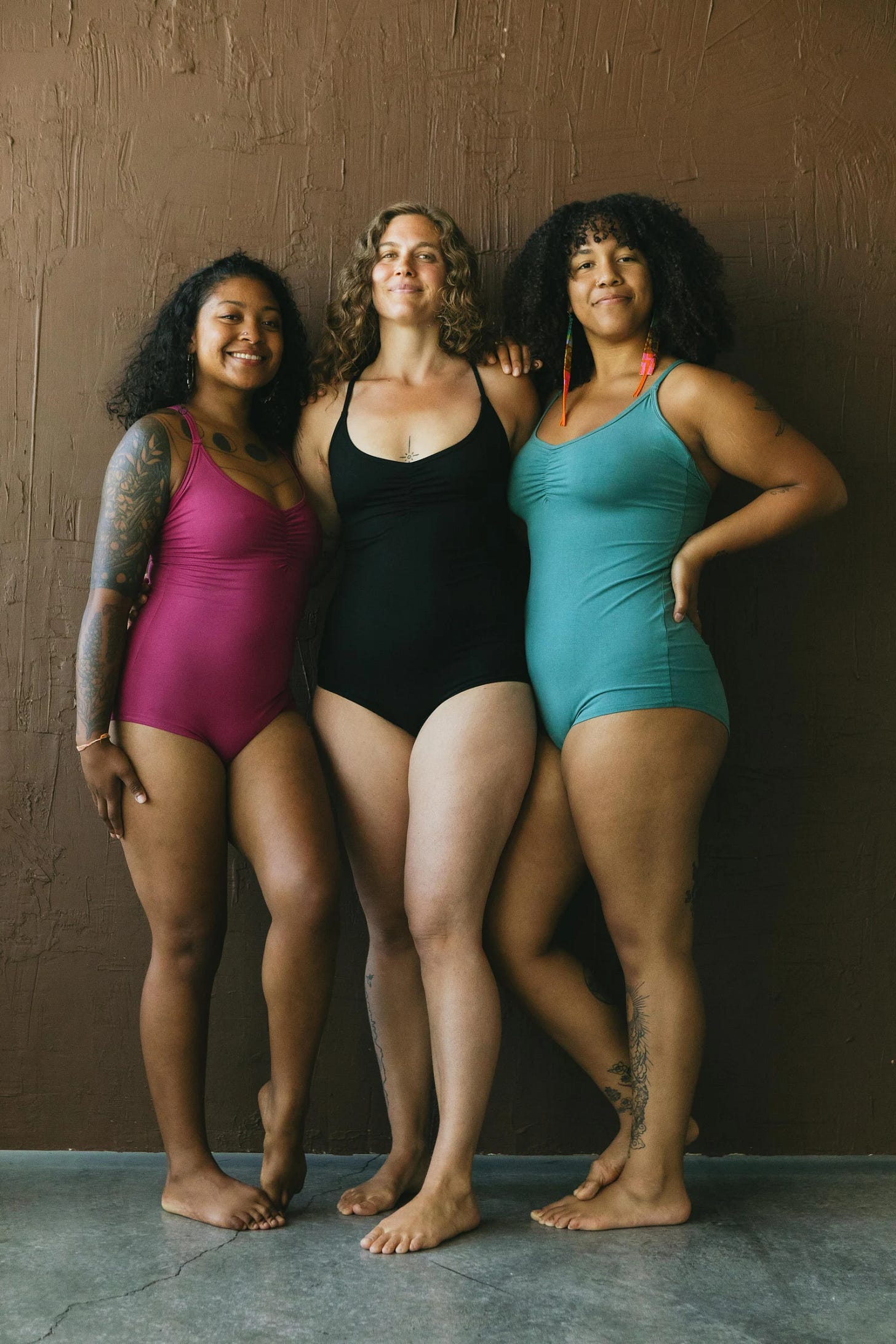
Designed in Portland, Oregon and made in Kathmandu, Nepal by skilled craftspeople, Una Pluma makes beautiful GOTS certified organic cotton and natural fibre basics using low-impact dyes. Their organic cotton bodysuit is described as a great natural alternative to synthetic swimwear, made from thick organic cotton fabric and available in several colour ways.
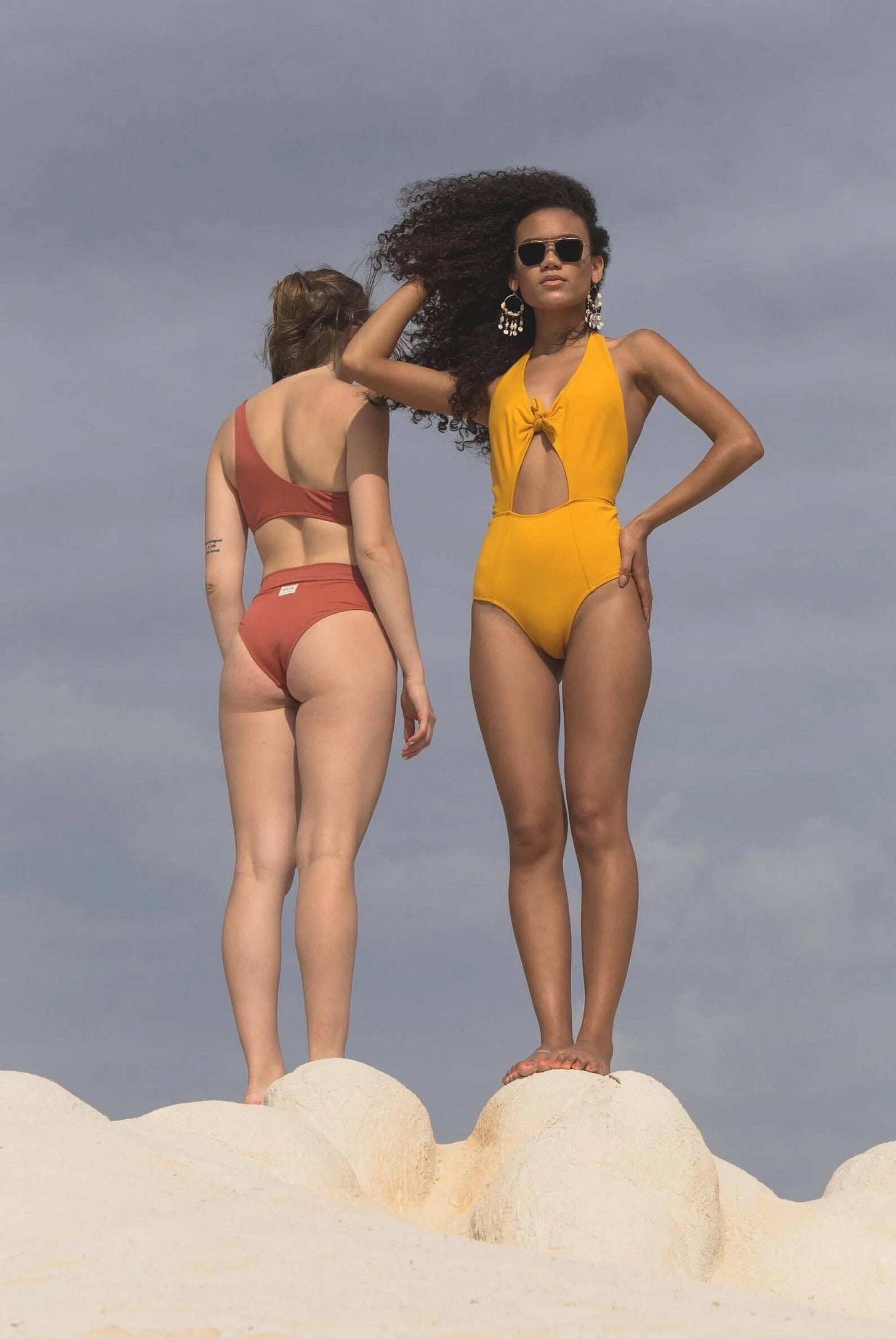
Muxima Beachwear has a lovely collection of bathing suits, bikinis and a few kids swimming costumes too, all made from GOTS certified organic cotton in Portugal.
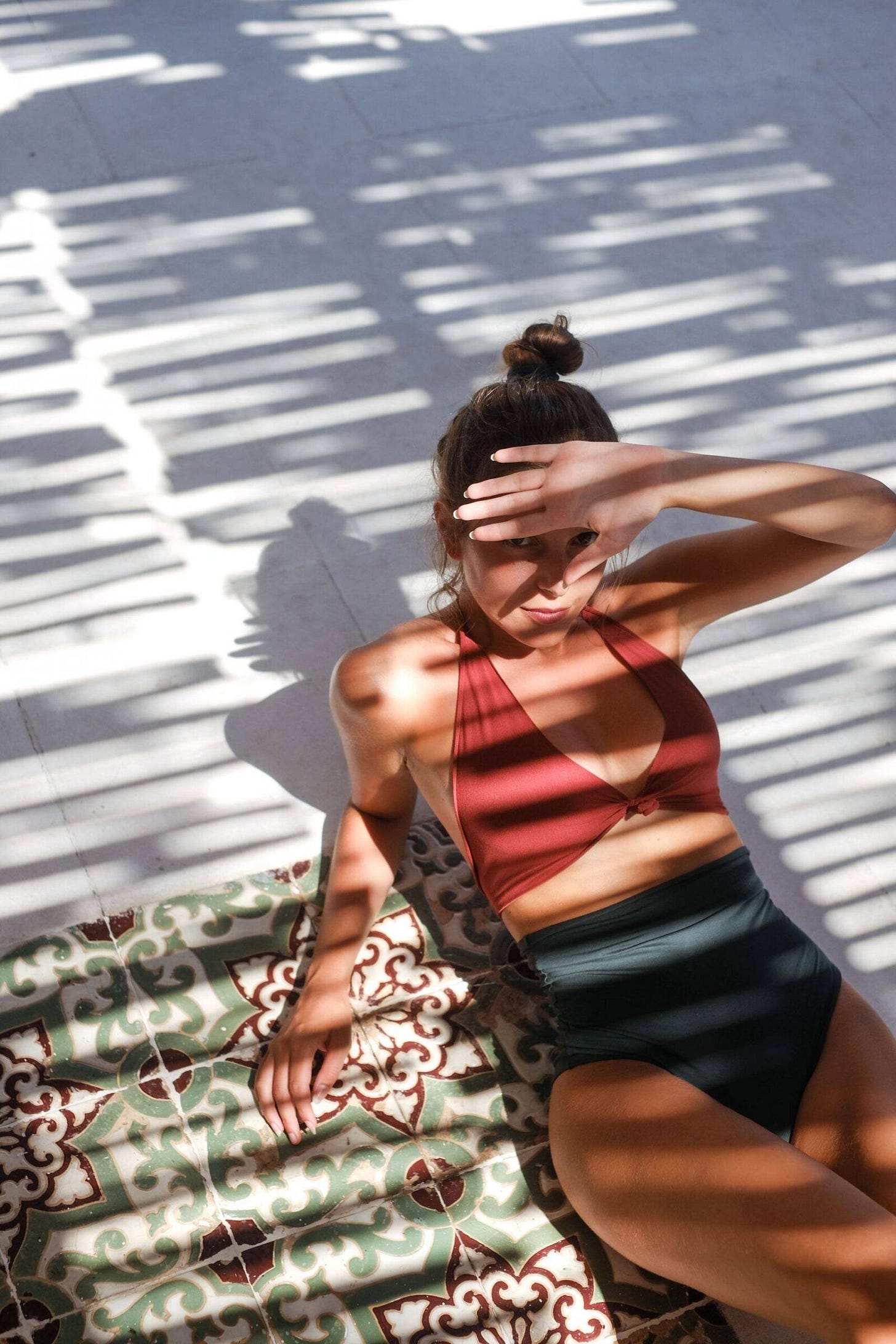
Isole & Vulcani has a wide variety of plastic-free swimwear for adults and kids to choose from, all made in Italy from GOTS certified organic cotton.
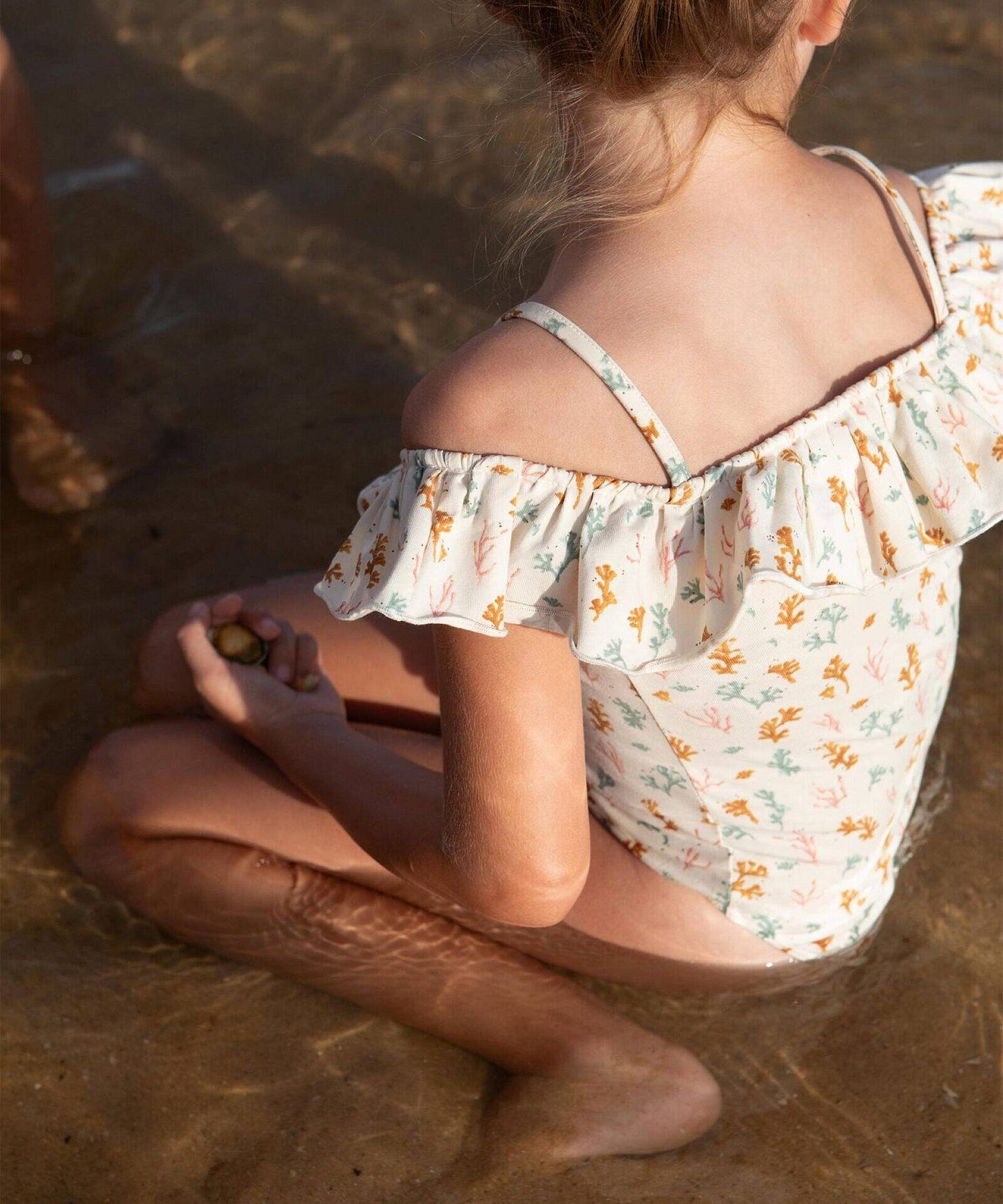
Play Up is a Portuguese brand with swimwear for babies and kids made from organic cotton and natural dyes. Their bathing suits and bikinis are adorable and their kids’ swimming shorts are made from 100% organic cotton (no elastane!) including the inner lining.
Canadian clothing brand Simply Merino have recently added merino wool swimwear to their line up. Made from 92% non-mulesed Woolmark® certified merino wool and 8% elastane, their one piece bathing suit is double layered in the body and triple layered at the bust with hidden pockets for additional cups. The straps are adjustable too! Separates are available and all can be worn as regular clothing too.
The kids bathing suit is a racer back style and I love the look of it!
Swim Nappies

Pure Earth Collection have recently launched their organic cotton swim nappies designed to be kind to your child’s skin, protect the environment and contain solid waste effectively! They are made from 98% organic cotton and 2% lycra on the outside with a 100% organic terry cotton lining inside and use non-toxic dyes. Available in a choice of yellow or green and no outer cover is needed
Reusable swim nappies like the Splash About Happy Nappy are another reusable option but not completely plastic-free. They are made up of two parts – an inner cotton pant that is washable and reusable and a neoprene (synthetic) outer to keep solid waste contained. They are often easy to find second-hand too.
Wetsuits
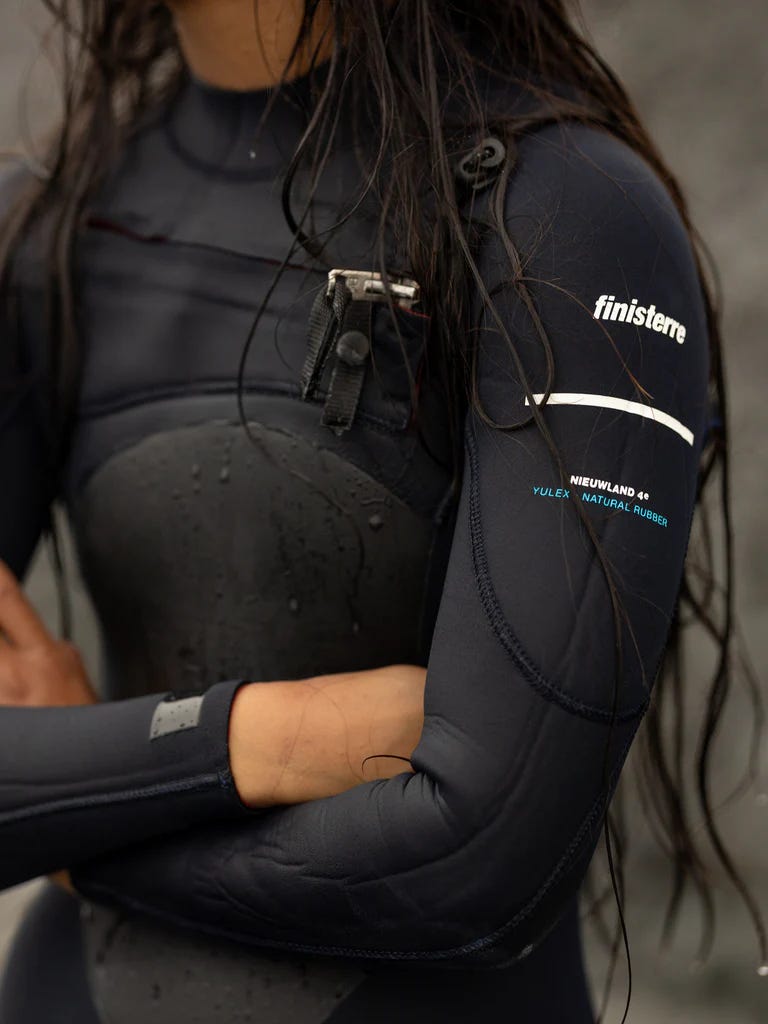
Most wetsuits are made from neoprene which is made from either petroleum or limestone. Yulex is an innovative plant-based neoprene alternative made from purified latex – a sap harvested from FSC certified rubber trees. Brands making Yulex wetsuits include Patagonia, Finisterre, Srface and Slo Active. Most use around 80% Yulex and 20% synthetic rubber and all still have a synthetic outer and inner lining.
An alternative option is to rent a Yulex wetsuit from Finisterre (currently only available in the UK) who have partnered with Zoa, the UK’s first integrated fashion rental specialists. This would be ideal for part time surfers (e.g in the Summer months), someone just starting out or a seasoned pro who simply wants to try before purchasing.
Swimming Caps, Goggles, and Fins
When it comes to swimming caps, opt for ones made from silicone instead of plastic. These ones have a rather snazzy selection of prints. If you want something in a solid colour, try any of these silicone swimming caps from Alpine Trek.
Same goes for goggles too! Bonus points if you can find them second-hand. For kids’ swimming goggles these ones from Swim The Lakes come in plastic-free packaging.
And Petites Pommes have a selection of mostly silicone kids swimming masks.
Schlori also have several silicone swimming goggles for kids to choose from.
Hevea makes 100% upcycled natural rubber kids’ swim fins, and Dick Pearce offers natural rubber or silicone fins for adults.
Inflatables / Swimming Aids
Plastic-free inflatables are pretty much impossible to find. In the meantime, choose second-hand and repair when needed. But keep in mind that PVC (which is what most inflatables are made from) is toxic as it is mixed with softening chemicals called plasticisers, which can leech and are harmful to human health. Exposure can occur through touching, inhaling or accidentally swallowing any PVC. Personally, I wouldn’t want my child swimming in a PVC pool that’s been sitting in the sun all day. PVC is also one of the least recycled plastics.
If you’re looking to invest in a family pool, it’s worth searching repurposed stock tanks. These are essentially large, stainless steel pools that range in size, from small oval ones perfect for backyard ice baths or cold water plunges to large 10ft diameter family pools. They are more of an investment, but the perfect in-between solution for people wanting something to cool off in without committing to a full sized swimming pool. Check out Dip Tanks in the UK and Sunshine Pools in the US. Alternatively, search stock tank pools near you.

Built on an ethos of sustainability, innovation and a deep connection to the ocean, Corcamar creates high quality, plastic-free swimming floats and kick boards from sustainably sourced, renewable cork - harvest from cork oak trees every 12 years without harming the tree.
After a lot of searching, I found these natural cotton inflatable swimming wings by Schlori Schwimmkissen. The only plastic part is the adjustment buckle. We use these a lot and they’re surprisingly good at keeping little ones afloat and in a natural swimming position! Just make sure the cotton is completely soaked before blowing air into them. You can wash the Schloris in the washing machine at up to 40°C but avoid the dryer which can damage the cotton fabric. But make sure to dry them between uses.
How To Recycle Old Swimwear
If you’re keen to make the switch to natural swimwear but wondering what to do with your old swimwear, then try recycling it. Swimwear, wetsuits or outdoor clothing from any brand can be recycled through Alpkit’s Continuum Project. Just drop them off in store or post for free.
Circle One recycles wetsuits with Barefoot Tech who turn the recycled material into bags.
Join the Outdoor Swimming Society’s NEW TO YOU marketplace on Facebook for second-hand swimming gear.
I hope you found these suggestions useful! Happy swimming!
Kate x




